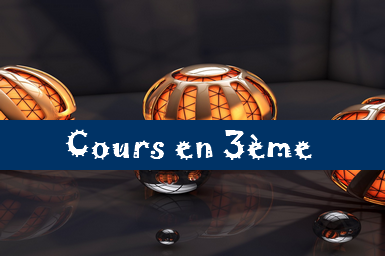
Tous les cours de maths en troisième (3ème) au format pdf
Un document qui reprend sous forme de synthèse, tous les cours de mathématiques en classe de troisième afin de préparer le brevet de mats au collège.
Vous retrouverez dans ce document à télécharger gratuitement au format pdf les cours suivants :
- Arithmétique
- Calcul numérique et fractions
- Puissances et écriture scientifique
- Les racines carrées
- Développement et factorisation
- Equations et inéquations
- Notion de fonctions
- Fonctions linéaires
- Fonctions affines
- Grandeurs composées et unités
- Géométrie dans le plan
- Les angles
- Triangles, quadrilatères et polygones
- Droites remarquables et triangles
- Théorème de Pythagore et de Thalès
- Trigonométrie
- Périmètres et aires
- Volumes et aires latérales
- Pourcentages
- Probabilités
- Statistiques
- Les quartiles
- Les différentes représentations graphiques.
Ce document qui fait la synthèse de tous les cours de mathématiques en troisième est à télécharger au format PDF.
Cours de maths en troisième 3ème
D'autres cours et exercices à consulter
- Brevet de maths 2023 : sujet blanc pour réviser le brevet du collège.
- Annales du brevet de maths 2024 : réviser le DNB de maths.
- Cours de maths en 3ème à télécharger en PDF.
- Centres étrangers 2017 : sujet et corrigé du brevet de maths
- Géométrie dans l’espace : exercices de maths en 1ère corrigés en PDF.
- Amérique du Nord : bac de maths 2024 sujet 1 corrigé en PDF.
- Brevet de maths 2017 – sujet et corrigé du rattrapage en Polynésie
- Aires et périmètres : exercices de maths en 6ème corrigés en PDF.


